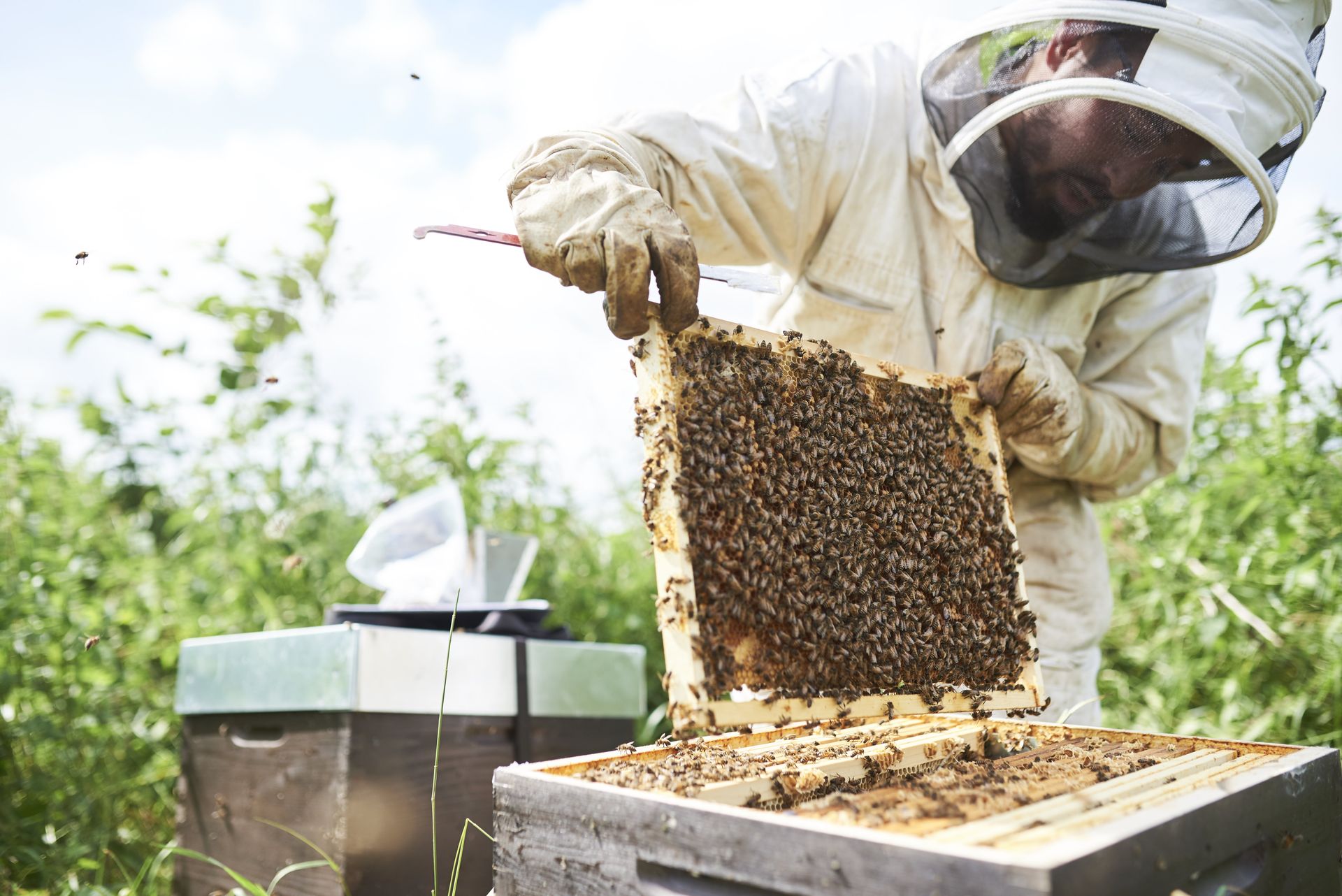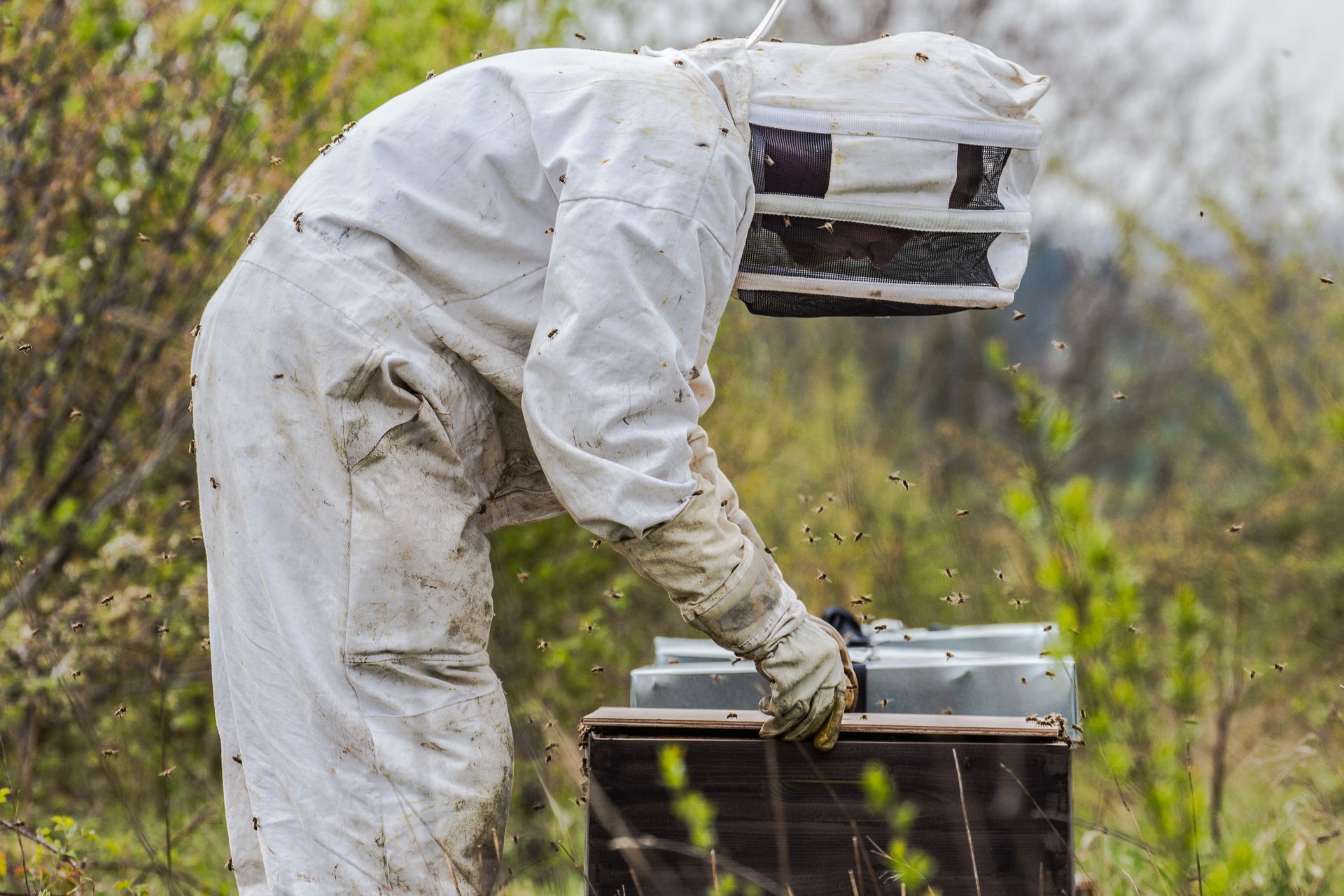What is BeeOdiversity?
Established in 2012,
BeeOdiversity is on a mission to foster biodiversity preservation and pollution
reduction while creating value. BeeOdiversity provides site environmental
monitoring through pollen analysis collected by bees. BeeOdiversity's
pioneering innovation, the BeeOmonitoring tool, serves to assess the
environmental quality of extensive yet cost-effective areas. This tool
uses data collected by domestic honeybees to
monitor the environment.
In the context of BUFFER+, BeeOdiversity will be monitoring 5
different sites across Europe to measure the impact of landscape based
solutions for climate adaptation in peatlands.
Where can you find the beehives by now?
- West-Flanders, Belgium
- Groningen, Netherlands
- Normandy, France
Moreover, the beehives will be places in Ireland and Germany as well.
The pilot sites are chosen together with the partners of BUFFER+ in the
specific countries.
What can be found by the BeeOmonitoring and how
does it help work towards the BUFFER+-goals?
BeeOdiversity is participating in Work Package 1 (WP1). In WP1 the objective is to restore peatlands and create healthy peatlands. Using BeeOmonitoring, they can identify plant species over wide areas. This season, they identified several important species commonly found in peatland environments, like bistort, common heather, hemp-agrimony and purple loosestrife. The monitoring also detected an invasive alien species, Himalayan balsam, typical of wetland environments. This discovery is crucial as invasive alien species (IAS) are one of the five main causes of biodiversity loss. This information enables the partners of BUFFER+ to take appropriate action against such species to help improve the environment.

Additionally, BeeOmonitoring helps with identifying pesticides, although they aren't used within peatlands but often come from nearby agricultural fields. Understanding the impact of these pesticides and collaborating with farmers allows BUFFER+ to work towards reducing concentrations and improving the peatland environment.
The first results

Bees are normally active between spring and
autumn. The first results of the measurements came out, of 2023. This
information can help us to make up plans for specific species that you want in
these areas.
For example; in Normandy, we found 6 pesticides in total. Only one of them, Fludioxonil, is above the Maximum Residu Level (MRL). In West-Flanders wetland-environment species occur a lot, which is a good sign. There have not been found invasive species. But, in Flanders only the last half year of 2023 have been measured. So this could also be a reason that the invasive species haven't been found. In Groningen, we found 3 invasive species that are a threat to peatland. Moreover, there is found one pesticide, Propamocarb, that is more than MRL. Propamocarb is common in potato fields.
What does it mean, when a pesticide exceeds the Maximum Residue Level?
When a pesticide exceeds the Maximum Residue Level (MRL), it means that the residue level of the pesticide is higher than the legally allowed limit. This has several implications that involve biodiversity lost in different ways:
- Non-target Species: Pesticides are designed to control specific pests, but they can also affect non-target species, including beneficial insects, birds, and aquatic organisms. If the MRL is set too high, it may lead to increased pesticide concentrations in the environment, potentially harming non-target species and disrupting ecosystems.
- Residue Runoff: Pesticide residues can enter water bodies through runoff, leading to contamination of aquatic ecosystems. This can negatively impact aquatic organisms, disrupt food chains, and contribute to biodiversity loss in water habitats.
- Residue Build-up in Soil: Pesticide residues can accumulate in the soil over time, affecting soil-dwelling organisms and the overall soil ecosystem. This can have cascading effects on biodiversity, especially in agricultural areas where pesticides are frequently used.
-
Secondary Effects:
Pesticides can have indirect effects on biodiversity by impacting plants that
serve as habitat and food sources for various organisms. For example, if
pesticide use leads to a decline in certain plant species, it can affect
herbivores and, subsequently, predators dependent on those herbivores.
Following steps
But what does these results mean for BUFFER+? First of all, identifying species and being able to see what species you want more or how you want to threat the invasive species, can give you guidance in an approach. For instance, start a conversation with local farmers and help them in finding alternatives for pesticides. Because of these facts, we can see specific what we want to encourage and substantiate decisions about management and policy that increase biodiversity.